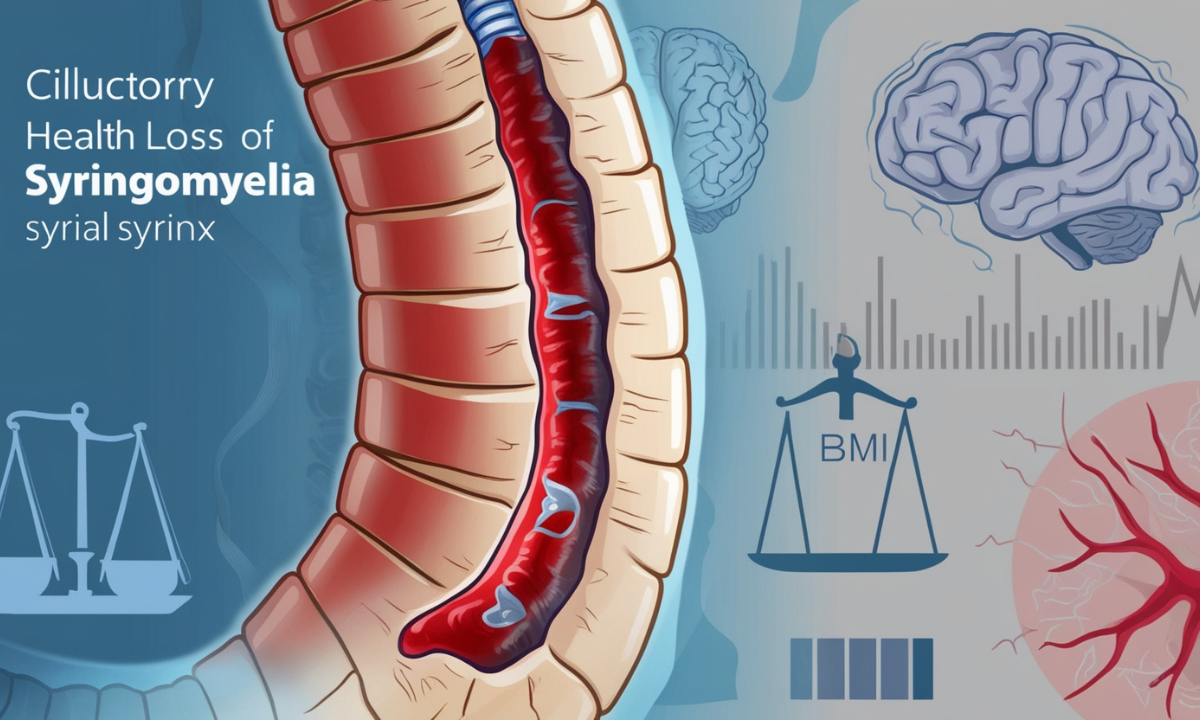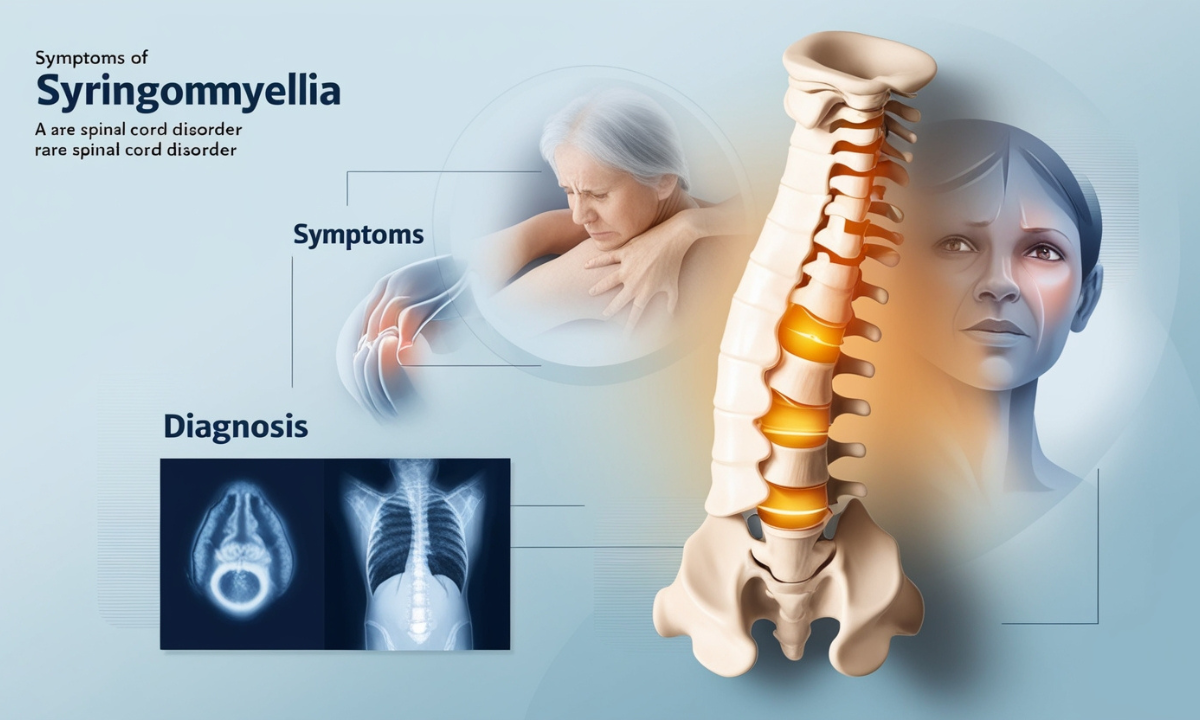How Central Syrinx Weight Loss Affects Overall Health
Central syrinx is also known to afflict patients suffering syringomyelia as well as Chiari malformation, which is an implication of a fluid filled cavitation, referred to as a syrinx in this case, developing inside the spinal cord. This condition is a debilitating one and adversely affects the social welfare of a person. In this blog we will discuss the effect of central syrinx weight loss on health, with an emphasis on the change in weight among patients diagnosed with syringomyelia and Chiari malformation.
Key Takeaways
- Understanding Syringomyelia: This disease is due to the formation of cystic changes within the spinal cord and areas surrounding the spinal cord making them qualify to be termed as the syrinx cyst. This scenario can culminate in multiple neuropathological signs and or outcomes. neurological symptoms and complications.
- Chiari Malformation Connection: Chiari malformation type I is usually accompanied by syringomyelia and the patients are suffering from various signs and symptoms due to raised intracranial pressure.
- Weight and Health Impact: It is a well-known fact that Chiari malformation has a considerable relationship with body mass index (BMI) and visceral obesity is likely to worsen the existent symptoms and complications of both Chiari and syringomyelia.
- Treatment Options: Very often treatment of syringomyelia is accompanied by surgery of Chiari malformation and weight control measures to help in the general wellness of the patients.
- Symptoms and Diagnosis: The intensity of the pain, weakness, or sensory symptoms all make the symptoms associated with syringomyelia immensely unpleasant. Early diagnosis is critical for effective management.
- Syrinx Formation and Obesity: The relationship between obesity and symptomatic Chiari malformation suggests that weight loss may alleviate symptoms and contribute to the resolution of syringomyelia in some patients.
- Neurological Symptoms: Patients with Chiari malformation and syringomyelia may experience neurological symptoms, including headaches, neck pain, and coordination issues.
- Surgical Treatment: Surgical options, such as decompression surgery, can address both Chiari malformation and syringomyelia, potentially leading to weight loss and improved health outcomes.
- Lifestyle Modifications: Healthy lifestyle changes, including diet and exercise, play a crucial role in managing weight and improving health in individuals with these conditions.
- Long-term Prognosis: Understanding the long-term effects of central syrinx and the importance of weight management can help individuals achieve better health outcomes.
Understanding Syringomyelia and Chiari Malformation
Syringomyelia can be defined as a rare disorder affecting the central nervous system caused by abnormal cyst formation in the spinal cord. It is often secondary to a variety of causes including injury, neoplasm, or hereditary factors.
Most commonly syringomyelia is seen in association with Chiari malformation – most commonly Chiari malformation type I – in which the brain’s mass extends into the cervix.
Due to gallbladders, normal functions of the spinal cord may be impaired, as a result of which various neurological conditions may arise. These conditions, however, are quite unique owing to the fact that they are strongly influenced by the dimensions and the topography of the cyst as well as the overall state of health for any given individual.
Symptoms of Syringomyelia
Symptoms of syringomyelia can include:
| Symptom | Description |
|---|---|
| Pain | Localized or widespread pain in the back, neck, or shoulders. |
| Weakness | Muscle weakness may develop in the arms or legs, affecting mobility. |
| Sensory Changes | Altered sensations, such as numbness or tingling. |
| Temperature Sensitivity | Reduced sensitivity to temperature changes. |
| Neurological Symptoms | Coordination issues, balance problems, and difficulties with fine motor skills. |
The diagnosis of syringomyelia often involves imaging studies, such as MRI, to visualize the syrinx and assess its size and impact on surrounding structures.
The Connection Between Weight and Chiari Malformation
Recent studies sought to establish a relationship between obesity and the Chiari malformation with associated symptoms. Increased body mass index (BMI) may aggravate the symptoms observed among individuals who have Chiari malformation and also affect the formation or worsening of syringomyelia.
Body Mass Index and Chiari Malformation
Increased body weight is known to increase intraparenchymal pressure, which may aggravate Chiari malformation symptoms. Such pressure can be problematic by causing additional illness, such as syrinx development, and aggravation of existing neurological disorders.
| BMI Category | Classification | Health Implications |
|---|---|---|
| Underweight | BMI < 18.5 | May experience increased neurological risks. |
| Normal weight | BMI 18.5-24.9 | Lower risk of complications related to Chiari. |
| Overweight | BMI 25-29.9 | Increased risk of symptomatic Chiari malformation. |
| Obese | BMI ≥ 30 | Higher risk of severe symptoms and complications. |
Obesity and Symptomatic Chiari
In previous studies, it has been concluded that patients with obesity and symptomatic Chiari are most likely to suffer from moderate to severe neurologic symptoms including widespread headaches and chronic pain, consequently, weight management is a deficiency in those cases.
Treatment Options for Syringomyelia and Chiari Malformation
Treatment of syringomyelia and Chiari malformation is predominantly surgical but, to be effective often requires medication and lifestyle changes as well.
Treatment of Chiari Malformation
Management of Chiari malformation can be done through the use of surgical techniques where decompression of the spinal cord in the regions of abnormalities, hence intracranial pressure is lowered. After the surgical procedures, patients may notice improvement in their signs and symptoms thereby increasing the possibility for weight loss in such patient populations.
| Surgical Procedure | Purpose | Expected Outcomes |
|---|---|---|
| Decompression Surgery | Relieves pressure on the brain and spinal cord. | Reduces symptoms, may improve neurological function. |
| Shunt Placement | Drains excess fluid from the syrinx. | Alleviates pressure and potential symptoms. |
| Spinal Fusion | Stabilizes the spine in severe cases. | Prevents further complications and enhances stability. |
Weight Management Strategies
In addition to surgical treatment, implementing a weight management program is essential for individuals with Chiari malformation and syringomyelia. Strategies may include:
| Strategy | Description |
|---|---|
| Dietary Changes | A balanced diet focused on whole foods, low in processed sugars and fats. |
| Regular Exercise | Incorporating physical activity tailored to individual capabilities. |
| Behavioral Modifications | Addressing emotional aspects of eating for long-term success. |
Symptoms and Diagnosis of Syringomyelia
Identifying the signs of the disease that this condition causes is very important as it allows for the earliest detection and treatment of the ailment. Positive outcomes can therefore be maximized since the quality of life will be improved.
Diagnosis of Syringomyelia
Usually, the process warrants an assessment which includes history taking, physical examination, and investigational imaging. MRI is the most reliable method for examining a syrinx and determining the condition of missiles in relation to surrounding tissues.
Long-Term Health Implications of Weight Loss
Effective weight management may lead to resolving syringomyelia as well as improving the individual’s health. Some studies report on cases where syringomyelia regressed on its own, particularly after weight loss and lifestyle changes.
Health Benefits of Weight Loss
Weight loss can lead to several health benefits, including:
| Benefit | Description |
|---|---|
| Reduced Neurological Symptoms | Alleviates symptoms associated with Chiari malformation and syringomyelia. |
| Improved Mobility | Enhances physical mobility and overall functionality. |
| Lower Risk of Comorbidities | Reduces the risk of developing associated conditions, such as diabetes and cardiovascular diseases. |
The Role of Physical Therapy in Managing Symptoms of Syringomyelia and Chiari Malformation
This section discusses the effectiveness of physical therapy in treating patients with syringomyelia and Chiari malformation. Perhaps for the following independently identified subsections write a few sentences as well. You can include the points below:
- Benefits of Physical Therapy: Explain the potential effects of the state of the parameters of physical therapy in the patients suffering the neuromuscular postsurgical reconstruction.
- Types of Therapies: Provide an account of the forms of therapies that would be beneficial including but not limited to, manual therapy, therapeutic exercises, and neuro-muscular retraining.
- Patient-Centric Approach: Emphasize the need for creating treatment modalities that are oriented specifically towards the individual conditions and special needs of the patient.
- Role in Post-Surgical Recovery: Describe the contribution of physiotherapy in the recovery process after surgeries performed on Chiari malformation or syringomyelia aimed at restoring patients’ movements and strength.
- Long-Term Management: Elucidate the barriers to implementing physical therapy measures and describe in what ways it is possible to address these barriers in order to achieve after the average period of rehabilitation.
Lifestyle Modifications to Manage Symptoms of Chiari Malformation and Syringomyelia
Living with Chiari malformation and syringomyelia warrants an effective management plan which may also include changes in the way of life. Such changes when adopted by the patients suffering from these conditions can be very beneficial to them and even help deal with some of the ailments. Appropriate and frequent exercise can do everything from increase strength, correct posture, and even enhance spine health which helps in controlling neurological problems.
As such, just as before, there remains a great need for the use of exercises that seek to improve the highest tolerance levels attainable for the spine such as nutrition rich in self-defeating molecules. In addition to these, adequate water intake and stress-management muscle-oriented measures such as warm water baths and yoga among others can also be very effective.
Regular contact with the healthcare system in order to control the condition and modify the control measures in line with the symptoms is also very important. It is possible for people to have a greater degree of independence from the disability caused by Chiari malformation and syringomyelia. They will continue to cope with the unimaginable tasks, tolerating the disease and simultaneously improving one’s life.
My Opinion
As I have said above, the physics may need to be clearly backed up by the comprehension of the link between the progressive weight loss of central syrinx and overall patient health for those suffering from syringomyelia and journeying the Chiari malformation. The significance of these conditions reveals the need for interdisciplinary strategies that combine medical interventions with lifestyle changes and other encouraging Measures. The advocacy at the level of the patients achieved by educating the patients is very important because it enables the patients to choose how they will treat themselves.
At the same time, proper body weight can positively affect the symptom burden and the chances of symptom relief. Hence, the importance of matching nutrition requirements, rehabilitation modalities, and operative measures can not be overstated. Last but not least, avoiding stigmatization of patients suffering from neurologic conditions like syringomyelia or Chiari malformation could impact their prognosis.






